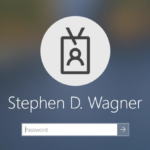
If you’re using Azure AD, and have Hybrid Azure AD joined machines, special considerations must be made with non-persistent VDI workstations and VMs. This applies to Instant Clones on VMware Horizon.
Due to the nature of non-persistent VDI, machines are created and destroyed on the fly with a user getting an entirely new workstation on every login.
Hybrid Azure AD joined workstations not only register on the local domain Active Directory, but also register on the Azure AD (Azure Active Directory).
The Problem
If you have Hybrid Azure AD configured and machines performing the Hybrid Join, this will cause numerous machines to be created on Azure AD, in a misconfigured and/or unregistered state. When the non-persistent instant clone is destroyed and re-created, it will potentially have the same computer name as a previous machine, but will be unable to utilize the existing registration.
This conflict state could potentially make your Azure AD computer OU a mess.
VMware Horizon 8 version 2303 now supports Hybrid Azure AD joined non-persistent instant clones using Azure AD Connect. If you are using an older version, or using a different platform for non-persistent VDI, you’ll need to reference the solution below.
The Solution
Please see below for a few workarounds and/or solutions:
- Upgrade to VMware Horizon 8 2303
- Use Seamless SSO instead of Hybrid Azure AD join (click here for more information)
- Utilize login/logoff scripts to Azure AD join and unjoin on user login/logoff. You may have to create a cleanup script to remove old/stale records from Azure AD as this can and will create numerous computer accounts on Azure AD.
- Do not allow non-persistent virtual machines to Hybrid Domain Join. This can be accomplished either by removing the non-persistent VDI computer OU from synchronization with Azure AD Connect (OU Filtering information at https://docs.microsoft.com/en-us/azure/active-directory/hybrid/how-to-connect-sync-configure-filtering) or by disabling the scheduled task to perform an Azure AD join.
In my environment I elected to remove the non-persistent computer OU from Azure AD Connect sync, and it’s been working great. It also keeps my Azure Active Directory nice and clean.